Today we have Sam’s 2008 BMW E92 335i and a brand new set of BC Racing BR Type Extreme Drop coilovers ready to be installed on the car. We recommend getting coilovers installed at a shop, but the installation can be a fairly easy task if you have the right tools and some decent mechanical knowledge. I mean, this is a DIY site right? Although we say it’s an easy installation, please do not try to attempt to install if you are not confident. See below for the 335i coilover install.
[tg_divider style=”normal”]
Disclaimer: This DIY does require you to lift your car so please use proper tools and follow all safety procedures if you choose to attempt. This guide is for your reference only. We are not liable for any damages or injuries that result from this guide.
[tg_divider style=”normal”]
The BR Series model is the perfect choice for street driving and the occasional road course or auto-cross duty. With easily accessible adjustment knobs for fine-tuning compression and rebound, ride height adjustment independent of shock stroke and spring preload, having a performance coilover system has never been easier. BC Racing coilovers come with camber plates so you can adjust your camber to get that perfect fitment and track setup. You can find the cheapest set on Amazon.com. Below is the link to purchase the system for 2008-2011 BMW E92 non-M.
1. FRONT COILOVER INSTALLATION
Step 1.1, lift car on approved set of jack stands. Please observe all normal safety procedures and do this on a flat surface. Never solely rely on your jack to keep the car lifted.
Step 1.2, remove wheels. We removed two wheels at a time starting with the fronts first.
Step 1.3 (optional), put on some music.
Step 1.4, remove wheel speed sensor and brake line from support bracket. On the driver side only, unclip leveling sensor from lower control arm. (picture not shown for leveling sensor)
Step 1.5, remove front fender liner. There should be about 12-14 pop its on each one.
Step 1.6, remove top end link nut, slide out bracket and push top end link out. Make sure all lines are separated from the bracket.
Step 1.7, loosen two bolts on the lower control arm. A 360-degree turn on each bolt should suffice.
Step 1.8, remove nut and bolt on steering knuckle that holds the coilover strut.
Step 1.9, open hood and remove 3 nuts on upper strut mount. As you undo the last nut, the strut will drop so be ready to catch when the entire steering assembly drop. Tip: place a small jack underneath the lower control arm to catch and drop slowly.
Step 1.10, angle out the strut from the wheel well. We haven’t removed the strut from the strut tube yet so it won’t pop out until we loosen which we will cover in the next step. Tip: angle the steering assembly to allow for max clearance when it comes out of the wheel well. The top bolts on the coilover will barely slide out underneath the fenders. Mask painters tape on fender if you are concerned with paint scratch.
Step 1.11, remove strut from strut tube. There is a small gap in the knuckle and you need some kind of spreader tool to open up the strut tube to loosen tension on the tube. We recommend using the Schwaben Spinde Housing Spreader Tool, but since we didn’t have one we found much luck with a 1/4 allen wrench. Stick in the allen wrench in the gap and turn until you feel the tube opening up. Now we can pull the strut out. There is a metal bracket that will drop out as well. Warning: We do not recommend using a pry bar or flat head because loosening too much can result in damaging the OEM tension in the casting.
Step 1.12, insert new coilover into the strut tube while allen key is spreading the casting. Once strut is flush, remove allen key.
Step 1.13, insert bolt back into steering knuckle from Step 1.8. Make sure to include metal bracket if it fell out. Torque to 34 ft-lbs. Tip: make sure the brake line and wheel speed sensor line is wrapping around the strut how it was originally.
Step 1.14, put coilover assembly back in wheel well and secure upper strut mount with 3 nuts. Torque nuts to 25 ft-lbs.
Step 1.15, install end link and bracket.
Step 1.16, is very important. Load coilover spring and torque the two lower control arm bolts to 50 ft-lbs + another 90 degree rotation. Load coilover means you need to have all the car’s weight sitting on the spring. This will ensure correct torque setting on the lower control arm bolts so you don’t prematurely damage suspension bushings and other components. You’re torquing the control arm bolts in the car’s natural sitting position. To load spring, we jacked up the lower control arm until the car lifted up from the front jacking point. Please use all caution when doing this procedure.
2. REAR COILOVER INSTALLATION
Step 2.1, lift the rear end using the central jack point and use proper jacks to keep the car suspended.
Step 2.2, open trunk and remove rivets that hold the trunk liner. You will need a T40 torx bolt for one of these removals.
Step 2.3, remove black plastic circle cap underneath trunk liner to access the top rear strut mount.
Step 2.4, remove nut on top of the rear shock by using a 16mm wrench and a 6mm socket to hold counter so the shock doesn’t spin while you remove the nut.
Step 2.5, remove nut on bottom shock using a 17mm deep socket. Use a 15mm hex wrench on the shock to keep the shock from spinning while you release the nut.
Step 2.6, compress OEM shock to remove from assembly.
Step 2.7, with a jack supporting the lower control arm, remove the lower control arm outer bolt. Tip: slightly lift lower control arm with jack to relieve pressure on bolt so it can slide out easier.
Step 2.8, with the jack still supporting lower control arm, loosen the lower control arm inner bolt. (pictured on left) About a full turn will suffice. Your control arm weight is now being supported by the jack.
Step 2.9, slowly lower jack to lower the control arm and remove OEM spring.
Step 2.10, prepare your new spring height adjustment for install.
Step 2.11, seat the new spring on lower control arm with the bottom sitting flush in the holder. Make sure the upper spring perch is settled in the chassis hole.
Step 2.12, place the lower control arm outer bolt back in using a jack to lift the lower control arm. Do not tighten just yet. Bolt pictured in Step 2.7.
Step 2.13, as in Step 1.16 you must torque the lower control bolts after the spring has been loaded. Jack up lower control arm until the car’s weight is being supported by the rear suspension. While the car suspension is loaded, torque both inner and outer lower control bolts to 121.6 ft-lbs.
Step 2.14, install new rear shocks. You may need to recycle some of the OEM parts from your shock. For the BC Racing application we reused a bushing. Compress the shock slowly and insert the bottom part first.
Step 2.15, install 17mm locking nut on the bottom shock and lower control arm. Torque to 28 ft-lbs while holding shock to prevent rotation. (pictured in Step 2.5)
Step 2.16, mount shock to through the top mount. You will need to adjust your rear shock height (not spring height) now.
Step 2.17, install lock nut on top strut mount through the trunk and torque to 20 ft-lbs. For the BC Racing application, we reused the stock OEM yellow bushing, but we had to modify it. We read this article on how to modify.
After the installation it is mandatory to get a 4-wheel alignment since the suspension geometry has been changed. Not doing so will result in excessive and abnormal tire wear. I’m sure you will be adjusting the height a few more times so make sure you set it to your desired settings and then go get an alignment. Happy installing!
1 Comment
Leave a ReplyCancel reply
This site uses Akismet to reduce spam. Learn how your comment data is processed.




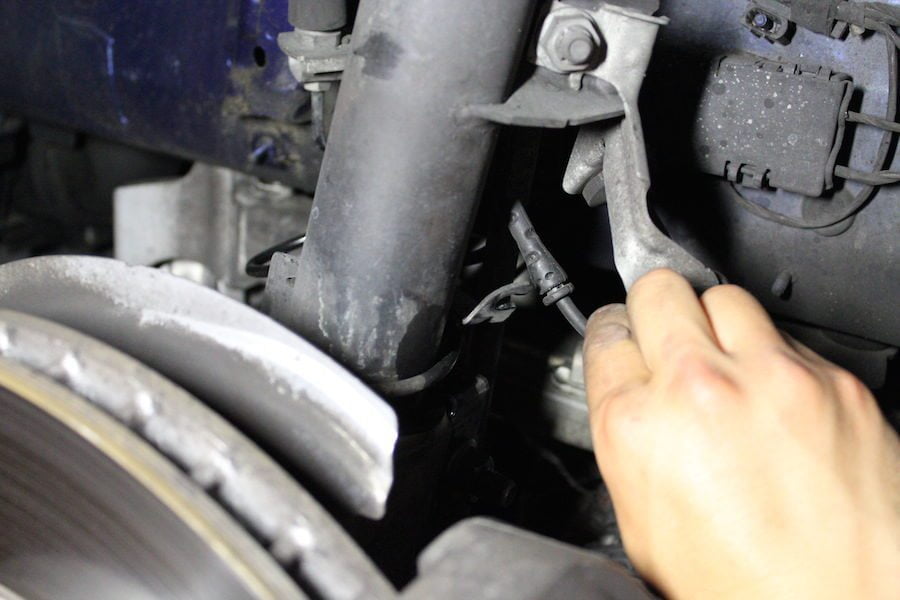

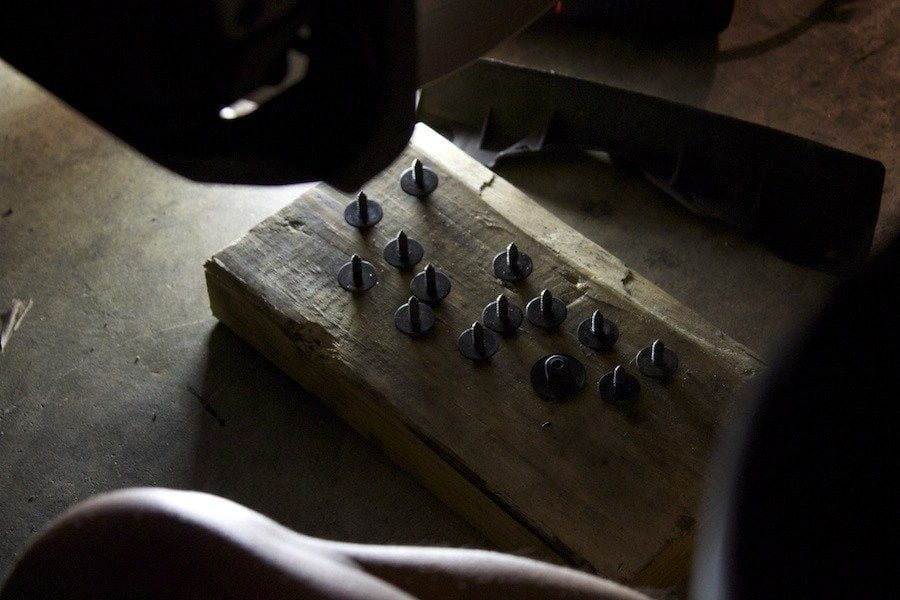



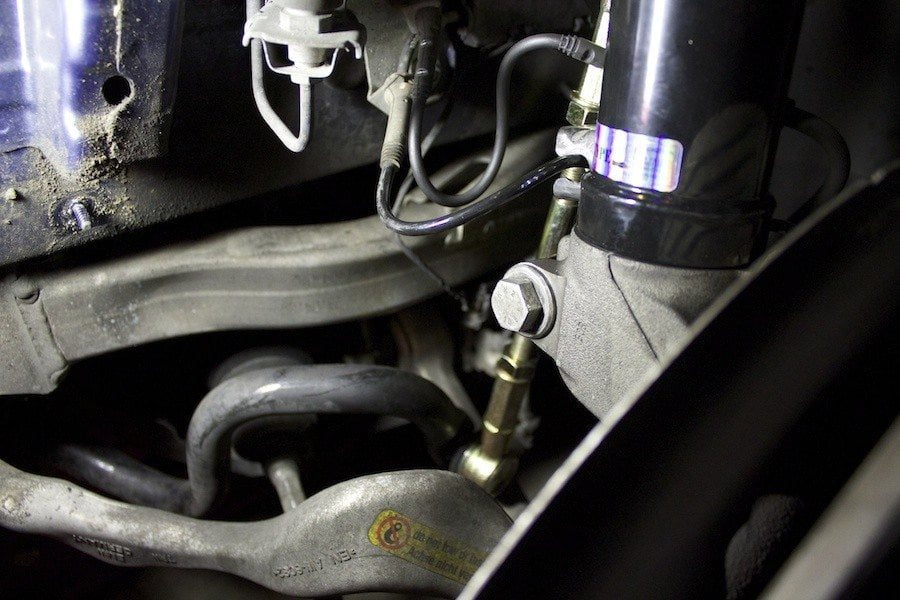

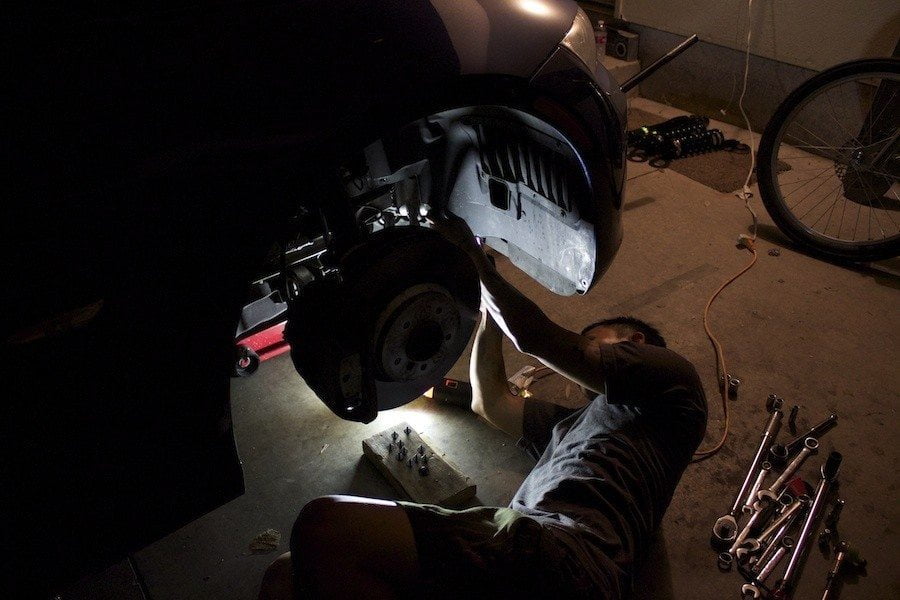







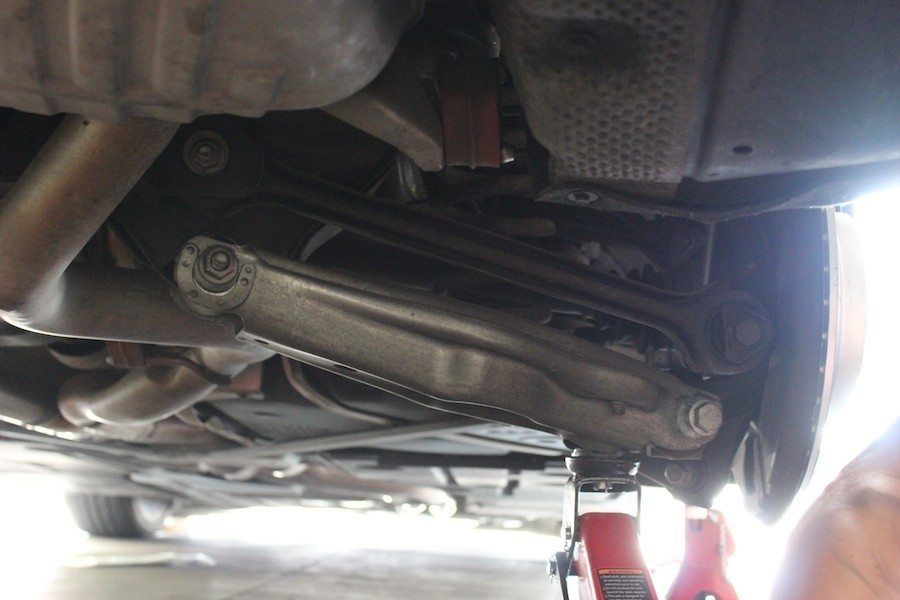


Quick question where does the two pieces in the first photo at the top right hand side go? The two round pieces, Thanks